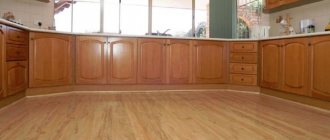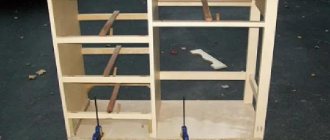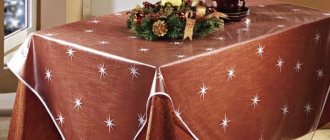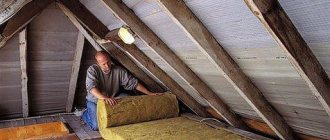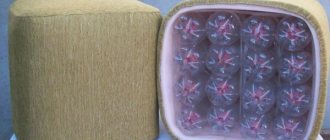One of the most common materials used for flooring is linoleum. It is easy to install, easy to maintain, and does not cause any problems to the owner during operation, the period of which, it is worth noting, is very long. However, in order for the coating to look harmonious and last the entire stated time, it is important to lay it correctly. And when laying linoleum, there is such an aspect as the correct joining of the edges of two separate canvases. How to join linoleum together? You can get the answer and learn about all the possible ways in this article.
How to join linoleum together
Connecting linoleum joints
Options for laying linoleum
Joining linoleum is a fairly simple process, although it is carried out strictly according to certain regulations. But the connection of two separate canvases will directly depend on the method by which the material will be laid and what it is.
Joining linoleum - features
There are two main types of linoleum - commercial and household . The main difference between them is the thickness of the material. Commercial linoleum is much thicker and stronger than the household linoleum we are used to. Because of this, it is more difficult to connect, but it has high strength and durability. So before laying the material you will have to make a choice which type will be used. There is also semi-commercial linoleum .
Using linoleum you can create an inexpensive imitation of expensive natural materials
Advice! It is not recommended to buy linoleum thinner than 3 mm, even for installation in an apartment. It wears out very quickly.
Despite its apparent solidity, linoleum consists of several layers. The top layer is the front layer, which is made of PVC. The strength and wear resistance of the material as a whole will depend on its thickness. Thus, we can highlight:
- household linoleum , the thickness of the front layer of which varies between 0.1-0.3 mm;
- semi-commercial linoleum with a PVC layer thickness of 0.4-0.5 mm;
- commercial material having a PVC layer thickness of 0.6 mm or more.
The range of linoleum is extensive
In addition to the front, linoleum has other layers:
- the layer located in the middle , which is a layer of a special reinforcing mesh made of glass cotton;
- heat and sound insulating bottom layer , the manufacturing material for which is PVC foam.
The structure of household linoleum
The top of the linoleum can be coated with a moisture-resistant varnish, which will not only improve the appearance of the coating, but also provide additional protection for the decorative layer from external influences.
Technical characteristics of different types of linoleum
It is also necessary to decide what color and pattern the material will be used with. The choice of colors is now very large - linoleum can be plain, or it can have some kind of ornament or even look like stone or imitate a plank floor. There are designs that resemble carpeting or tiles. The material should match the color scheme to the overall style of the interior.
Linoleum in the interior
Attention! If linoleum has a complex geometric pattern, then at the joints it (the pattern) should match. Therefore, you will have to buy material with the reserve necessary for joining the canvases. Accordingly, the cost of purchasing linoleum will increase.
Cold welding of linoleum
There are two methods for laying linoleum with subsequent joining - laying the sheets overlapping or butt-to-butt. The first installation option has some disadvantages:
- water getting under the canvas and causing dampness. As a result, the appearance of mold and mildew on the subfloor;
- due to the layering of canvases on the floor, a small step will form, which will interfere with walking - the floor will not be level;
- If the sheets are not secured to each other, then debris will get under the linoleum. And if you fasten them with ordinary glue, then, most likely, the canvases will come apart in the future.
Laying linoleum
That is why it is not recommended to use this method of laying linoleum and it is better to lay the sheets end to end. The most important thing is to connect the two sheets after laying the material so that no moisture or debris gets under them. Fortunately, there are now several convenient docking options. Let’s get acquainted with them and figure out which one is more convenient to use when installing linoleum.
Do-it-yourself linoleum joining option
Prices for linoleum from
linoleum tarkett
Methods for joining sheets
The joining of individual linoleum sheets is carried out to achieve the following goals:
- beautiful appearance of the floor covering, its integrity;
- smooth and neat floor in the house;
- protection of the subfloor from debris and water getting on it;
- protection of basements from moisture (if the apartment is on the ground floor or linoleum is installed in a private house).
How to properly join linoleum
There are 4 main methods of joining linoleum. They can be carried out either using adhesives or through additional elements. Types of joining seams:
- using regular double-sided tape;
- using thresholds, partitions;
- cold welding with special glue;
- hot welding with a special cord.
Let's take a closer look at all the methods of joining materials.
The photo shows linoleum joining using a threshold
Cold welding of linoleum
This method involves treating the joint between two cuts with a special glue for linoleum. The composition, acting on the material, is able to dissolve it, penetrating deeply into the structure of linoleum, and when hardened, it reliably connects two separate canvases. The glue is quite toxic and you need to work with it carefully, observing safety precautions and ventilating the room. Otherwise, you can easily be poisoned by the vapors of substances contained in the glue.
Type A adhesive for cold welding
The method is simple to perform at home and easily glues both household and commercial linoleum. But it is only suitable if the gap between the pieces of material is small. Also, the technique does not require the purchase of any special equipment. And the seams between the two cuts will be completely invisible to the naked eye.
It is important to remember that this type of welding is not used for material that has an insulating felt layer on the reverse side. It is also not used for thick multi-layer types of linoleum.
Cold welding for linoleum
Adhesive for linoleum joints
There are three types of adhesives classified as cold welding. Each of them is suitable for processing a certain category of seams.
Cold welding, type C
Table. Types of adhesives for joining linoleum.
| Name | Characteristic |
| Type A | Glue is used to join sheets of new material just brought from the store. Suitable for gluing both household and commercial linoleum. The glue is very liquid, so it is recommended to treat only small gaps with it and, preferably, to work only with dense material. To work with glue, you need to purchase masking tape and use gloves. The drying time for the adhesive composition is about 30-40 minutes, after which you can walk on the floor without fear. |
| Type C | The adhesive composition is suitable for processing material up to 4 mm thick. Most often used for joining or repairing used linoleum. Allows you to join fabrics lying with large gaps. This glue is quite thick and does not require the use of masking tape when working with it. |
| Type T | This glue is used to join PVC linoleum, which has a polyester base. Suitable for joining both new and used material. It is often used for gluing linoleum to a subfloor, but is quite expensive and is usually purchased for gluing fabric used for commercial purposes. |
Prices for cold welding for linoleum
cold welding for linoleum
Important! When working with any type of glue, it is important to ensure that the composition does not get on the front side of the material. Otherwise, the canvas will be damaged. It is not recommended to remove drops of glue by wiping - it is better to wait for it to dry and cut off the drop with a sharp knife.
Cold welding with application needle
Cold welding of linoleum
Step 1. Two linoleum sheets are overlapped by about 5-6 cm. This is necessary to create a high-quality cut and good joining.
The overlap between the canvases should be approximately 5-6 cm
Step 2. The cut of two linoleum sheets is made in the middle of the overlap. To do this, markings are applied using a ruler and a straight line is drawn.
Marking
Step 3. It is most convenient to make the cut using a metal ruler. It presses well against the material along the previously applied markings. Next, a cut is made with a sharp knife. Both layers of material are cut at once.
Linoleum is being cut
Step 4. The linoleum trimmings resulting from the previous procedure are removed. The result was a neat joint, which even now is invisible to the eye.
The result is a neat joint
Step 5. The linoleum joint is glued with regular masking tape.
The joint is taped with masking tape
Step 6. At the junction of the canvases, cut the masking tape, also using a knife.
Masking tape being cut
Step 7. A special cap equipped with a needle is screwed onto the tube of cold-welding glue.
A cap with a needle is screwed onto the tube
Step 8. Next, the needle is inserted into the gap between the canvases and the glue is carefully squeezed out to its intended place. The tube moves along the applied masking tape.
The needle is inserted into the gap between the sheets
Filling the gap with glue
Step 9. After applying the glue, wait about 15 minutes for the glue to set.
The glue will dry in about 15 minutes
Step 10. The masking tape is carefully removed. It takes about 40 minutes for the glue to dry completely, after which you can move on the floor.
Masking tape is removed
Video - Cold welding of linoleum
Bonding with mastic
Mastic is one of the most popular adhesives. It makes it easy to glue linoleum at home. The method is reliable, it connects “tightly”, but if you need to remove the coating for a while, then the linoleum will tear in the place where the mastic was used. It is also easy to attach the raised piece this way.
Work order:
- Before gluing the joints, prime the base.
- The edges of the coating are degreased with any alcohol-containing product. Acetone or solvents cannot be used, as they can corrode the linoleum.
- As soon as the base has dried, you need to apply a small amount of mastic to it with a spatula.
- Then the edges of the linoleum are applied to the surface and pressed tightly. The joint must be carefully rolled with a hard roller.
The mastic dries for about a day, so during this time the area where the coating has been treated needs to be pressed firmly with something heavy. A board is placed on the joined edges, and a load is placed on it.
Using hot welding
Hot welding is the most difficult type of joining linoleum, but at the same time the most reliable. Unfortunately, it requires the use of a certain type of equipment and is therefore rarely used in everyday life - mainly only for commercial use. And it is also not suitable for household thin linoleum, because it can melt the coating excessively.
Hot welding of linoleum
On a note! The temperature of equipment and materials during hot welding reaches about 450 degrees.
When using hot welding, linoleum is usually first glued to the rough base. Only after the glue has dried, work on welding the joints of the coating is carried out. When laying, linoleum sheets are not laid overlapping, but are joined together as tightly as possible.
Machine for hot welding of linoleum
To carry out the work you will need the following tools:
- a special cutting device for creating a groove between the blades;
- manual machine for welding linoleum;
- blade (crescent knife) to remove protruding glue.
Linoleum welding process
A special cord made of PVC and having a thickness of about 4 mm is used as a connecting material. You can buy it at a hardware store in a 100 m roll and in absolutely any color. Under the influence of temperature, the cord melts, thereby filling the joint between the sheets. After cooling, the cord acquires exactly the same characteristics as the linoleum itself.
Cord for joining linoleum sheets
Joining linoleum by hot welding
Step 1. Using a special cutter, a groove is created at the joint. That is, a piece of canvas of small width is simply cut out. But at the same time, the material is not cut through to the rough base. Debris, if any has formed, is removed from the groove.
Creating a Special Groove
Step 2. The hot welding cord is inserted into a special machine.
Hot welding cord inserted
Step 3. The nose of the device is placed at the beginning of the groove. After this, the apparatus is guided along it. The cord melts and fills the groove.
The nose of the device is placed at the beginning of the groove
Another photo of the process
Step 4. The remaining material formed after melting the cord is removed with a knife or a special device (pictured). Removal is carried out while the material has not yet hardened.
Removing Cord Remnants
Important! A piece of cord should be taken of such length as to process about half the length of the joint at a time.
Video - Hot welding of linoleum
Compounding linoleum with other materials
Linoleum can be joined in other ways. For this, double-sided tape or special thresholds or profiles can be used.
Double-sided tape is the simplest material for joining linoleum. The method using it does not involve large time or financial costs, but it will not be possible to properly glue two sheets of material together. In order to glue linoleum using this method, the tape is simply glued to the rough base, and then the linoleum sheet is glued on top of it.
Double-sided tape
Joining linoleum using metal thresholds is also simple, but there is more work involved than with tape. Also, it is not always possible to choose the correct color for the thresholds and they do not look as aesthetically pleasing as seams sealed by welding.
Fasteners - screws, dowels - are usually sold complete with the threshold. You just need to screw the threshold at the junction of two pieces of linoleum to the floor. The difficulty is that the concrete base will have to be drilled first to create holes for the dowels.
Metal threshold for joining linoleum
On a note! If the linoleum has a figured joint (and this also happens), you can use a flexible profile or still opt for the cold welding method.
How to connect correctly: butt or overlap
There is a great temptation to attach the panels with an overlap. It’s simple, it’s difficult to make a mistake in a seam and, at first glance, it’s more reliable. But don’t delude yourself: the overlap area is vulnerable to moisture penetration, and in addition, it forms a noticeable unevenness on the floor that can cause you to trip. Those who justify this choice by possible shrinkage of the material most likely do not know that modern high-quality coatings do not give such shrinkage.
It is correct to lay linoleum end-to-end, but the joint must be protected from water leakage and fastened so tightly that under constant mechanical load the sheets do not separate or bend.
Features of joining with tiles and laminate
If joining two pieces of linoleum is not so difficult, then joining the edge of linoleum with other materials is more difficult. To join linoleum and tiles or laminate, you will have to solve several problems:
- what to do with height differences between materials;
- how to choose a similar or contrasting color;
- how to ensure that the materials are connected hermetically.
How to design a joint
If such joining is necessary, the best option is to use a threshold if the materials are at the same level. If you plan to leave the steps, you can use the corner profile.
Correct joining of linoleum is the key to ensuring that the surface will always be clean and dry, and that the material will look very aesthetically pleasing on the outside. And, as we can see, there are no special problems with performing the work - everything can be done with your own hands.
Types of thresholds
You can cover the joints of linoleum pieces with each other or with another floor covering with overlays of different purposes and materials.
Depending on the design and method of application, there are the following types of thresholds:
- Straight - for linoleum joints of the same thickness.
- Multi-level – compensate for differences in height on the floor; with their help, coverings of different thicknesses can be joined.
- Finishing – for sealing the edges of linoleum without joining with other materials.
- Corner - for finishing seams and edges of flooring on stairs.
USEFUL INFORMATION: Technology of laying parquet boards on plywood: price per square meter
The planks are made from different materials:
- Metal thresholds made of brass and aluminum are the most popular because the connection is strong, aesthetic and durable. Most often painted bronze, gold or silver.
- Plastic thresholds have a shorter service life, but some flexible models can be used to design rounded joints, and the price of the products is much lower. The requirements for them are specified in GOST 19111-77, which classifies door thresholds as semi-rigid products. In the photo below, the flexible plank performs several functions: it zones the space of the room and hides the difference in the thickness of the floor coverings.
- Rubber pads can have an aluminum base and prevent slipping.
- Wooden thresholds and MDF strips are rarely used due to their high cost and tendency to swell from moisture.
- Cork products are popular due to their environmental friendliness, softness and long service life. They perform a compensatory and shock-absorbing function.

